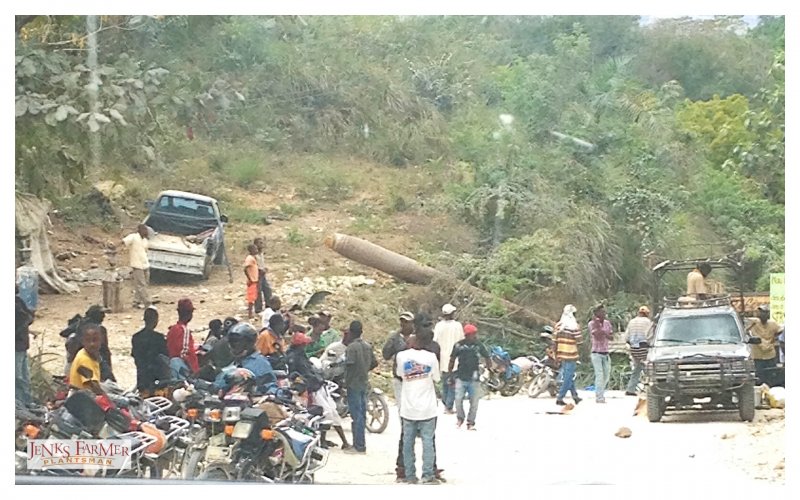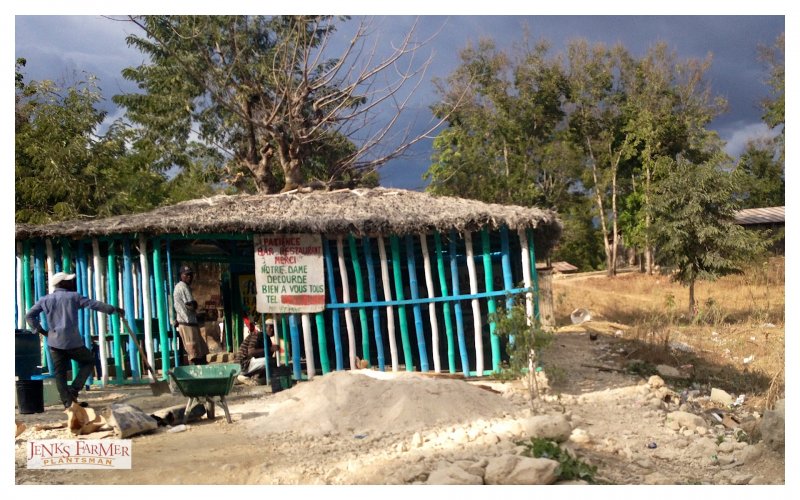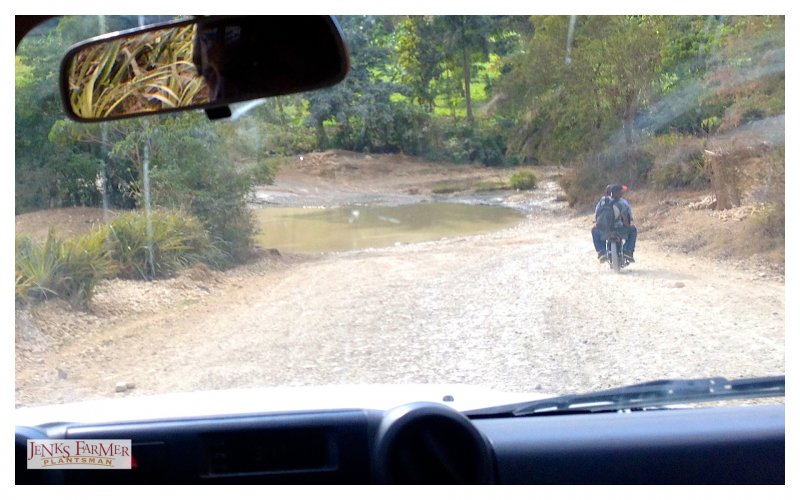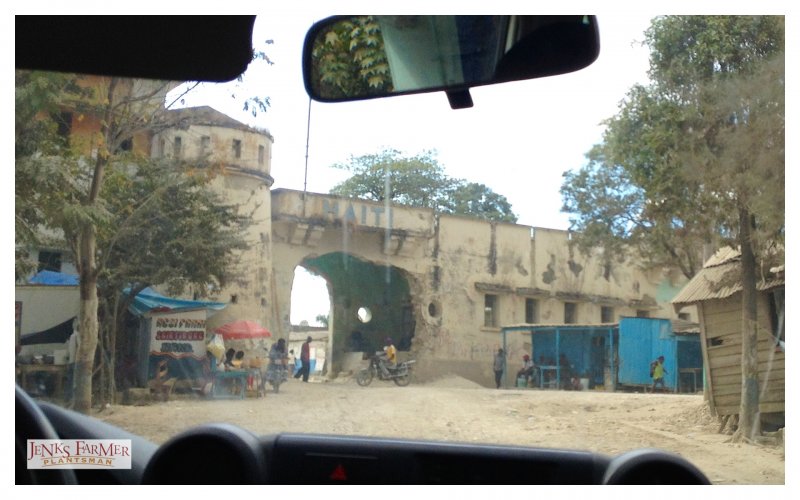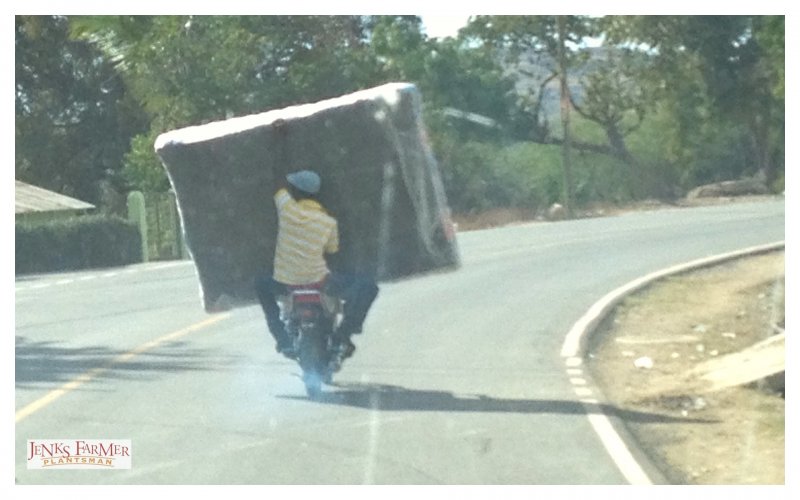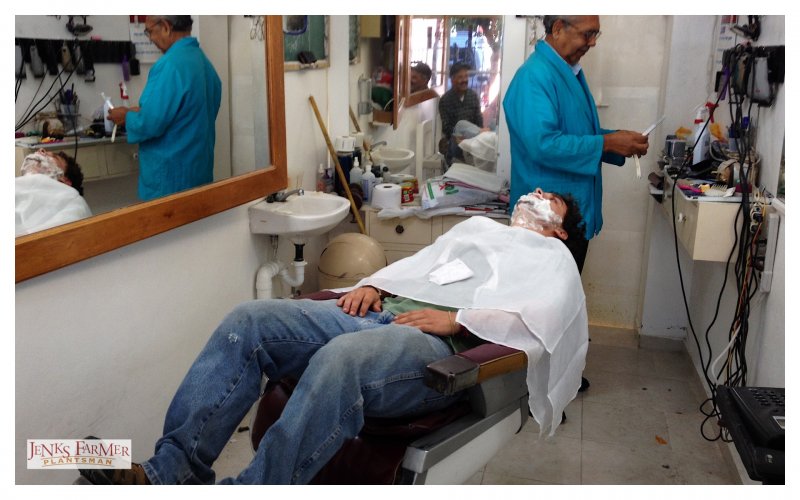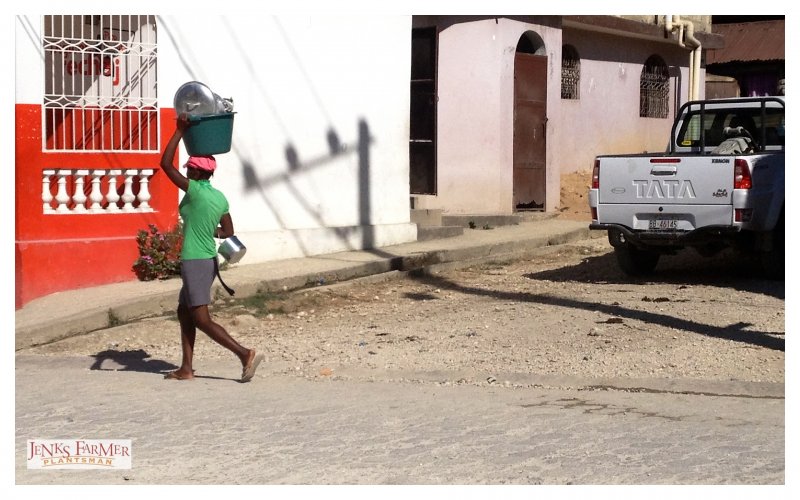Remarkable people on a road trip to the Haitian/Dominican Frontier
We traveled about 200 miles today. It took over six hours. The map makes it look easy and smooth. But this is Haiti where sometimes pavement turns into goat paths and sometimes street rioters block the entire road with felled palm trees and burning tires. Well, that was a tiny part of the adventure of four new friends crossing the Haitian frontier road.
We’d set simple goals for the day: Knox and I would go to the barber for a morning shave while Nicole and Jenn would buy some special Lebanesse-Dominican cheeses. Then we’d make the drive home, leaving the DR, crossing the border and arriving at our ‘dorm’ in Cange, Haiti. A shower, a beer, watching the stars, retelling stories from our two day mini-vacation in San Juan de La Manguana, Dominican Republic. The reality was more dramatic, longer, wearing, full of tension, rum in the back seat of a taxi and the landcruiser, burning tires, riots, prune shakes. Baby smooth shaved faces were soon a bit dusted by the day.
Before breakfast, we had mapped things out. Shave, shopping then
1. Splurge on a taxi for the first twenty miles.
2. Wander in the border town market.
3. Meet our friend and driver to climb in his Landcruiser for the last 180 miles of gravel road.
4. Beers on the porch, dinner, conversation, look at pictures and relax.
The taxi was great; smooth roads and good rum in the back seat. The Dominican border town market was fun too: Nicole and I bought a Cartier watch, and egg empanadas for under $4. Knox found a machete, Jenn lots of tropical yogurt drinks. We took pictures of cow heads at the butcher stall and sat under a Flamboyance tree in the park. But the driver didn’t show. Resourceful Jenn borrowed a phone, relayed messages and found out that he was stuck behind a ‘manifestation’ about halfway down the road. A manifestation is Creole for street riot. When Hatians get frustrated with government issues, they block roads.
Stuck on the wrong side of the protest but not forgotten, we waited on the driver’s friend, who’d take us through the border and on down the road as far as he could. The border is porous and active as a bee hive. I marveled at a young entrepreneur balancing a mattresses on his moped, watched cows, donkeys, pigs and baskets of chickens, okra and children pass across a barren dusty lot. The gravel road curves over a hill into Haiti beckoning us from the known, down the road of adventure. We, the only white people, the only English speakers, the only people with passports, had them stamped. No one else bothered. Then we packed into an old landcruiser.
Now, for my favorite part of the trip: The Road. Out the windows; treeless mountains, emerald ravines and tan, endless scrub. Only, this isn’t scrub. This brown, is Haitian farms — where people live, farm and dream. The ‘scrub’ is okra interplanted with banana trees, congo beans, staked cows, roaming goats, mangos, little patches of rice balanced on a terrace that surely will slide in the next rainy season. Every once in a while a bar/restaurant made from concrete and bamboo — all painted baby blue pops up sometimes with a sign advertising ice cream. Where the road dips through a river, look at that, he’s parked his Datsun bus in the river, and is washing it. His front plates read ‘Jesus Saves’. I title this picture ‘Baptism of the Most Dented Up Datsun You Ever Did See.’
I love this road. It’s a privilege to be on this track. Few tourists ever make it here — we only see 4 or 5 vehicles all day, save donkey carts and mopeds. Few locals want it to stay rough, flooded, blocked by donkeys or street riots. Signs of development show progress; grading and earth moving equipment is everywhere. Back in the quaint little Dominican town, the men in the barber shop talked about looming changes when the Haitian part of the road is complete. I can’t say to my young companions what it means to me; we are here at the end of an era. Progress makes me cry a little.
I’ve seen our South Carolina coast ruined, exploited, raped. My romantic summer day crabbing, swimming and climbing wind pruned sand dune oaks can never be experienced by children again. Tacky mini-mansions, new expressways to get people quickly to the sanctuary and tennis center ensure that. We sold out. Or our leaders sold us. It happens everywhere I guess. Not far from this little Haitian road, new Domincan interstates dump tourist cars at gated resorts — in places I recall from road trips just ten years ago as bucolic beach towns and swimming holes.
Don’t get me wrong, the people along this Haitian road need opportunity. I’d be happy to return one day, to this place to find no woman carrying 5 gallon buckets of water on her head, and no boys dragging wheel-less carts of stolen wood to be turned into charcoal.
Back on the border road, our driver stops to ask others what’s going on ahead. Everyone, everyone seems shaken and offers warnings, “turn around. It’s bad up ahead. Multiple road blocks, crowds and fires.” But we head into it, with a plan. We’ll leave the car, walk through it while our driver, our protector, tells the protesters that we are teachers in Haiti (true), and that we have a flight that we must catch tonight to go home for a visit.
From the top of a hill we see it all; the blockade, the hordes of men and mopeds. No one says much but I think we all worry as we unload backpacks. We flow into the crowd, climbing across the felled palms and smiling at the townsmen. They’re really nice and respectful; greet us and laugh at Knox. Even without speaking Creole, I understand the stares and the words blan (white person) and machet (machete). They’re talking about Knox Haynsworth, a smiling young man with a cowboy hat, an impressively long machete strapped to his Patagonia no wrinkle travel pants that only a white guy would wear. He has a Styrofoam container of left over empanadas in his hands and his never faulting ‘hey guys, I can laugh at myself too smile’ on his face.
There were three such roadblocks, so we walked like this for half an hour or so. Somewhere along the way, we all stopped to photograph a tiny patch of emerald green zoysia grass planted in the middle of ivory river rocks, arranged in the shapes of hearts and diamonds.
The image captures the day for me; among tension and turmoil, everyone stopped, admired the little garden, pulled out cameras to recall a little creative bit of the road that we’d have missed had our day gone along as planned.
Late that night, Knox and I achieved our goal; beers on the porch and stories under a pitch black sky. Nicole and Jenn seemed to have brought back a travel bug so our little party moves up to the medical clinic. In six hours, we covered our 200 miles but the road doesn’t end, the journey is all about being with people who openly share glimpses into their lives.
click on each picture to advance to the next….
LINKS The four of us on this trip decided to write complementary blogs touching on the people, the food, the whole experience from different points of vies. Here are:

